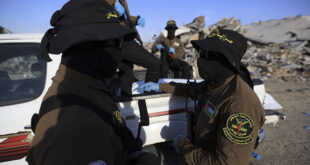The US military could take a hint from the advertising world when it comes to building a better image in Iraq and Afghanistan, according to a study for the Pentagon released this week.“Just as people think ‘safety’ when they think of Volvo automobiles, the US military needs to establish a strong brand identity that is consistently communicated through all US force actions and messages,” said the study by the independent RAND Corporation.
Instead of sending a positive message, the “show of force” brand that has been touted by the US military in its operations has had a negative effect on local populations, undermining potential support, it said.
“The central feature of consumer marketing is: know your target audience so you can satisfy their needs,” said RAND associate behavioural scientist Todd Helmus, a lead author of the report.
“The US armed forces need to know who the civilian populations of Iraq and Afghanistan are, apply that knowledge through day-to-day operations, and monitor how those civilian populations perceive US operations… Then the military can adjust operations to get more civilian support.” The research study analyses marketing techniques including branding, customer satisfaction, and “harnessing the power of ‘influencers’.”
It found that the same techniques could be applied to “help shape Afghan and Iraqi perceptions of American forces”. It also based its findings on dozens of interviews with marketing professionals as well as active and retired military personnel.
However, Helmus stressed that while image may be everything in the advertising world, making progress in a war zone would require the right kind of concrete action.
“It’s not just a matter of putting the right spin’ on US military actions, because words alone won’t win public support,” he said.
“Instead, US forces need to take the right actions if they want to get the local support that’s crucial to America’s counterinsurgency efforts in Iraq and Afghanistan.”
Among the study’s recommendations for the armed forces were “manage civilian expectations by not making promises they can’t keep,” and “monitor civilian satisfaction through town hall meetings”. It also recommended “social marketing” to encourage civilians to cooperate with coalition forces.
“The US military needs to identify and emphasise the benefits of doing so in a way that motivates the population. For example, providing tips on insurgents can improve civilians’ safety, if safety is a motivating benefit.”
 Eurasia Press & News
Eurasia Press & News



